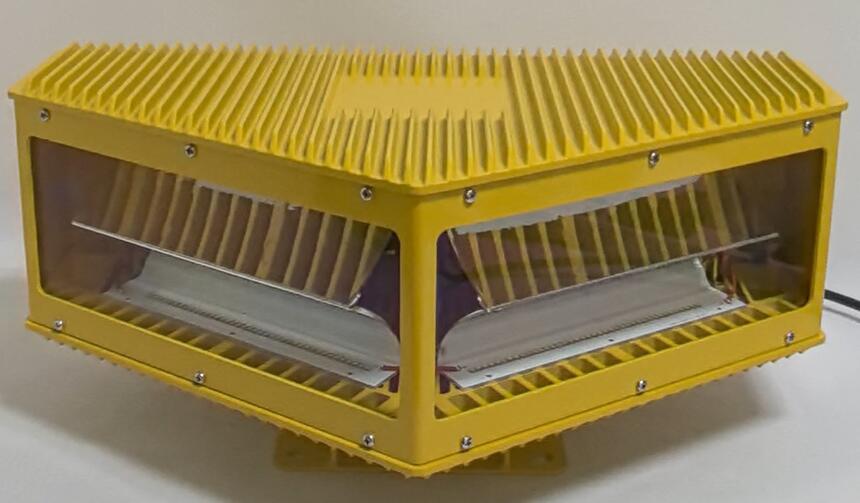Aviation Lamp for Tower: Critical Safeguards for Aerial Navigation
In our increasingly vertical world, communication towers, wind turbines, and skyscrapers present growing challenges to aviation safety. The aviation lamp for tower serves as a vital visual warning system, preventing collisions between aircraft and tall structures. These specialized lighting solutions combine regulatory compliance with cutting-edge technology to ensure 24/7 visibility. This article explores the evolving role of aviation lamp for tower systems, their technical specifications, installation best practices, and emerging innovations in the field.
The Vital Role of Tower Aviation Lighting
1. Collision Prevention in Congested Airspace
Modern airspace contains more obstacles than ever before - from 5G towers to offshore wind farms. The aviation lamp for tower provides essential visual cues that help pilots maintain safe distances, particularly during takeoff, landing, and low-altitude operations.
2. Regulatory Compliance Across Jurisdictions
International aviation authorities including:

ICAO (Annex 14)
FAA (AC 70/7460-1K)
EASA (CS-ADR-DSN)
Mandate specific lighting requirements based on tower height, location, and surrounding air traffic density.
3. All-Weather Visibility Assurance
Advanced aviation lamp for tower systems maintain visibility through:
| Aviation Lamp for Tower |
Heavy precipitation
Fog
Smoke
Darkness
Ensuring reliable performance in all operational conditions.
Technical Specifications and Lighting Classes
1. Lighting Intensity Classifications
Class Height Application Light Type Visibility Range
L-810 <45m (148ft) Steady Red 3-5 nautical miles
M-865 45-150m (148-492ft) White Strobe 5-10 nautical miles
H-885 >150m (492ft) High-Intensity White 10-20 nautical miles
2. Dual/Multi-Lighting Systems
Modern towers often combine:
| Aviation Lamps for Tower |
Red steady lights (nighttime)
White strobes (daytime)
Medium-intensity flashing lights (twilight)
3. Photometric Performance Requirements
Flash rate: 20-60 flashes per minute
Beam distribution: 360° horizontal coverage
Vertical dispersion: ±10° from horizontal plane
Installation and Maintenance Protocols
1. Optimal Placement Strategies
Top-mounted primary lights
Intermediate level lighting for towers >150m
Multiple lighting points for lattice structures
Ground-based lighting for wide-base towers
2. Maintenance Best Practices
Quarterly cleaning of optical surfaces
Annual photometric testing
Bi-annual electrical system inspection
Immediate replacement of failed components
3. Failure Detection Systems
Modern systems incorporate:
Automatic monitoring circuits
Remote status reporting
Redundant power supplies
Fail-safe operation modes
Technological Advancements in Tower Lighting
1. Next-Generation LED Solutions
50,000+ hour lifespan
40% energy reduction vs traditional lamps
Instant-on capability
Tunable light output
2. Smart Lighting Control Systems
Ambient light sensors
Weather-adaptive intensity
Predictive maintenance algorithms
Cloud-based monitoring
3. Sustainable Power Options
Hybrid solar/wind systems
High-capacity lithium batteries
Energy harvesting technologies
Grid-independent operation
Emerging Trends and Future Developments
1. Integration with ATC Systems
Digital NOTAM reporting
Automated outage notifications
Real-time status monitoring
2. Drone Detection Compatibility
RF signature enhancement
Visual/IR spectrum marking
ADS-B integration
3. Advanced Materials Science
Self-cleaning nano-coatings
Impact-resistant composites
Corrosion-proof alloys
The aviation lamp for tower has evolved from simple warning lights to sophisticated safety systems that integrate with modern air traffic management. As urban density increases and airspace becomes more congested, these lighting solutions play an increasingly critical role in aviation safety. Future developments in smart technology and sustainable design promise to enhance their effectiveness while reducing environmental impact. For tower operators and aviation authorities alike, investing in advanced aviation lamp for tower systems represents both a regulatory obligation and a commitment to preserving life in our shared airspace.
